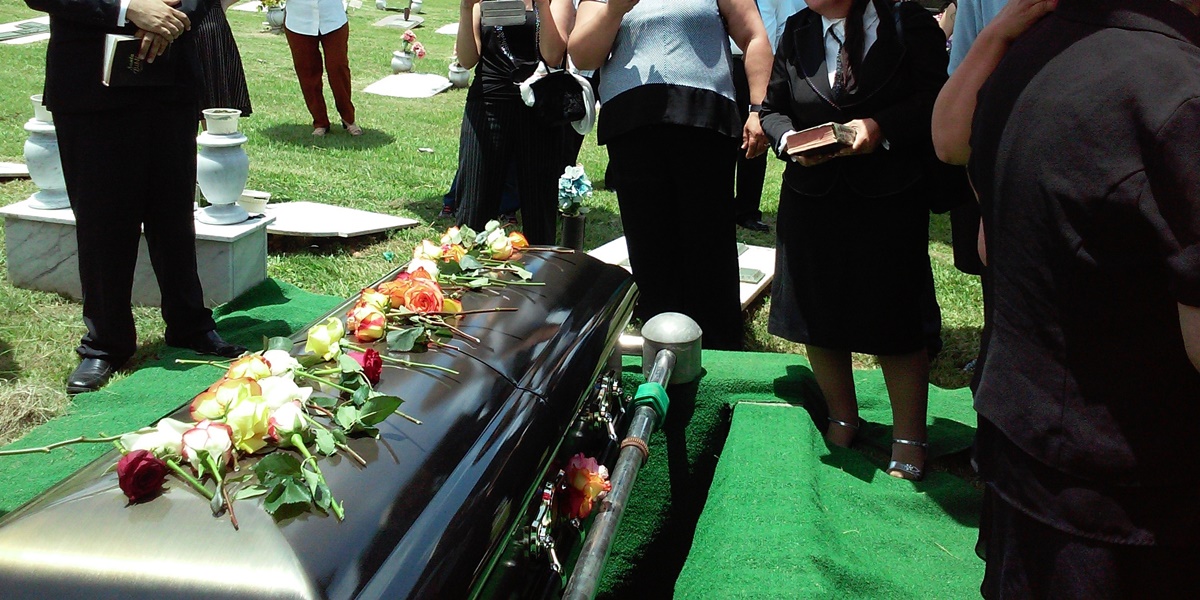Kapanlagi.com - In Javanese culture, selamatan ceremony is quite common. There are many types of selamatan, one of which is funeral selamatan. As the name suggests, funeral selamatan is held to pray for the deceased. The rituals related to funeral selamatan are explained in Javanese primbon.
Just like any other ritual, funeral selamatan is also conducted according to certain rules. In Javanese society, funeral selamatan is held based on certain days such as 7 days, 30 days, 100 days, 1 year, 2 years, up to 1000 years.
In addition to the timing of its implementation, there are certainly many things related to Javanese primbon of funeral selamatan that need to be known. What are they? To find out, just read the following explanation.
1. What is Selamatan Orang Meninggal

Illustration of What is a Funeral Celebration (credit: unsplash)
Selamatan Orang Meninggal is also known as the "blessing time for the deceased". This tradition is carried out with the aim of honoring and praying for deceased family members to obtain safety and peace in the afterlife.
Selamatan is usually performed several days after the funeral. During this moment, people usually gather at the deceased's house or the nearest mosque to offer prayers, read verses from the Quran, and seek forgiveness for the departed soul. It is believed that by performing this ritual, the deceased will find tranquility and peace in the hereafter.
A spiritual leader, usually an imam or someone knowledgeable in Islamic teachings, leads the ceremony. The imam recites prayers specifically for the deceased and their journey to the afterlife. This gathering also includes the recitation of surahs from the Quran, which are believed to bestow blessings and provide solace to the grieving family.
2. How to Determine the Day of a Funeral Celebration

Illustration of How to Determine the Day of Commemoration for the Deceased (credit: unsplash)
As mentioned earlier, funeral celebrations are usually held on special days such as 7 days, 40 days, 100 days, 1 year, 2 years, 1000 days. In the past, these special days for conducting the celebration could be obtained through manual calculations. To simplify, people usually use the day and pasaran (Javanese calendar) of death as a reference for counting.
However, in this digital era, technology has changed many aspects of our daily lives, including determining the day of a funeral celebration. There are already several Funeral Celebration Day Applications that can accurately determine the day of the celebration.
The presence of Funeral Celebration Day applications is a very helpful solution. Users can easily access them through their smart devices, such as smartphones or tablets. This application offers various features and functions that make it very useful in relation to the funeral celebration process.
3. Sequence of Commemoration for the Deceased

Illustration of the Sequence of Commemoration for the Deceased (credit: unsplash)
Commemoration for the deceased in Javanese tradition is done in a series, so there are several sequences and unique traditions in each implementation. Here is the sequence of commemoration for the deceased according to primbon (Javanese calendar) and Javanese culture.
1. Dina Geblak
The day of death is the first commemoration ceremony held after the burial procession. This tradition includes the recitation of the Yasin letter.
2. Telung Dina
Commemoration ceremony on the third day after death. Usually held at night, calculated using the lusarlu method. The recitation of the Yasin letter is also performed at this event.
3. Pitu Dina
Commemoration ceremony on the seventh day after death, calculated using the tusaro method. The recitation of the Yasin letter is still performed in this tradition.
4. Patangpuluh Dina
Commemoration after 40 days of death, calculated using the masarma formula. This tradition also involves the recitation of the Yasin letter, with offerings of tumpeng or ungkur-ungkur starting from the third day after death.
5. Nyatus Dina
Commemoration on the 100th day after death, calculated using the rosarma formula. The recitation of the Yasin letter is still part of this tradition.
6. Mendak Pisan
Commemoration ceremony one year after death, calculated using the patsarpat formula. In this tradition, weddings in mourning families are usually postponed until after this ceremony to avoid bad luck.
7. Mendak Pindo
A ceremony of prayer and offering, held 240 days after the death, calculated using the rosarpat formula.
8. Nyewu
A ceremony of prayer and offering, held 1000 days after the death, calculated using the nemsarma formula. Nyewu is the final ceremony in Javanese tradition, held after more than two years since someone's passing.
Those are some explanations of funeral ceremonies according to Javanese astrology. Hopefully, they are useful and can answer your curiosity.
JOIN OUR WHATSAPP CHANNEL TO STAY UPDATED WITH THE LATEST ENTERTAINMENT NEWS FROM INDONESIA AND ABROAD. CLICK HERE, KLOVERS!
(kpl/psp)
Disclaimer: This translation from Bahasa Indonesia to English has been generated by Artificial Intelligence.















